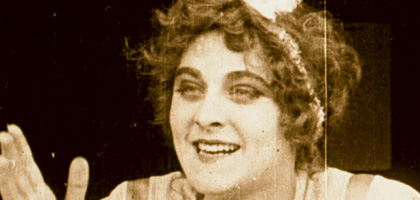Primary navigation
bfi links

Choosing which elements to use is a key decision in the restoration of a film. The National Archive restoration of A Film Johnnie represents just how complex the choice of material can be with Chaplin's Keystone films. The new print measures just under 750 feet and yet it is made up from six different copies.
The bulk of the newly restored version is taken from two prints of the WH Productions' reissue His Million Dollar Job held by the National Archive. Where there was decomposition in the prints, a nitrate duplicate negative, made here in 1948, provided some shots. A safety duplicate negative, also of the WHP version, from the Library of Congress, was used for several important shots. The collection of Lobster Films in Paris provided a duplicate negative of excellent quality. It was probably made in the early twenties and provided many of the film's opening and closing scenes.
Despite working almost entirely from reissues, there was another nitrate negative made in 1948 at the National Archive, from a section of Keystone print. It included two original intertitles that matched exactly the wording of the equivalent WHP titles. This provides further evidence for our faith in the WHP titles that seem to follow, reliably, the original Keystone wording.
The restoration of A Film Johnnie also demonstrates how early archival preservation copies themselves need preserving, as much as the original copies. Two of the four negatives used were National Archive preservation copies made many years ago on nitrate stock. These nitrate negatives have themselves now been preserved to ensure the best possible chance for the long-term survival of this film. The new print of A Film Johnnie is diverse in its sources but it has made the film a viewing experience again, rather than a duty.
Original running time 1020 ft/ 311m. Length of restored print 794ft
There is also an in-depth case study of A Film Johnnie by National Archive archivist Kieron Webb which gives a blow by blow account of this actual film restoration. We discuss the processes, the skills, knowledge and equipment needed and the decisions taken to bring the film back to as near original release condition as is possible.